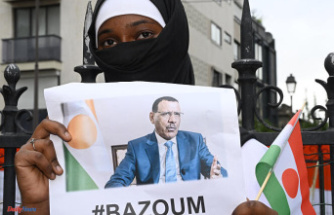Roman, 46, said that the water was a frightening sight and was frightful at first. "But I quickly woken up and realized that we must get these people off of the train."
Video of flash flooding on a platform at the Chelsea station emerged as one of the most striking images of the third major storm to soak the city since July -- a record downpour that once again turned some stations into a default sewer system and exposed the vulnerability of the 117-year-old subway system to extreme weather.
"New solutions need to be found quickly," Lisa Daglian, Permanent Citizens Advisory Committee to MTA said. "These 100-year storms have become 10-year and sometimes 10-day storms."
The remnants of Hurricane Ida-- which the National Weather Service said dumped over three inches of rain on the city between 8:51 and 9:51 p.m. -- led to service suspensions on most lines and caused delays that extended into Thursday evening on the subway and Staten Island Railway.
Governor Gov. Kathy Hochul told reporters Thursday morning.
"Here We Go Again"
After leaving work at 11 p.m. on Wednesday, Louis Santiago, a Hudson Yards server, couldn't catch the subway to Bay Ridge, Brooklyn. His employer instead put him and his coworkers in a Times Square hotel.
Santiago, 24, said, "When I first started to see the videos, it was like, ‘Here we go again.'" "My first thought was that we were in big, big trouble."
Hochul stated that while the MTA couldn't provide an immediate accounting of the extent of damage to subways, Hochul suggested that vulnerable spots should be identified.
She said, "We must be able to fix these first so that we don't get into a situation where drainage system, sewer system, or the water system can't handle it, then the water just creates rivers down the steps and into subway system,"
"Looked like something was being exploded"
The downpour came less than two weeks after the remnants of Hurricane Henri flooded some stations. A July storm soaked some stops in Upper Manhattan and The Bronx.
In April, THE CITY flagged how, nearly nine years after Hurricane Sandy, dozens of projects designed to strengthen the transit system against catastrophic weather in the future remain unfinished.
Three months later, a July audit by the U.S. Department of Transportation's inspector general found that more than half of the approximately $10 billion allocated to regional, state and city transportation agencies for Sandy-related repairs by the federal government has yet to be spent.












